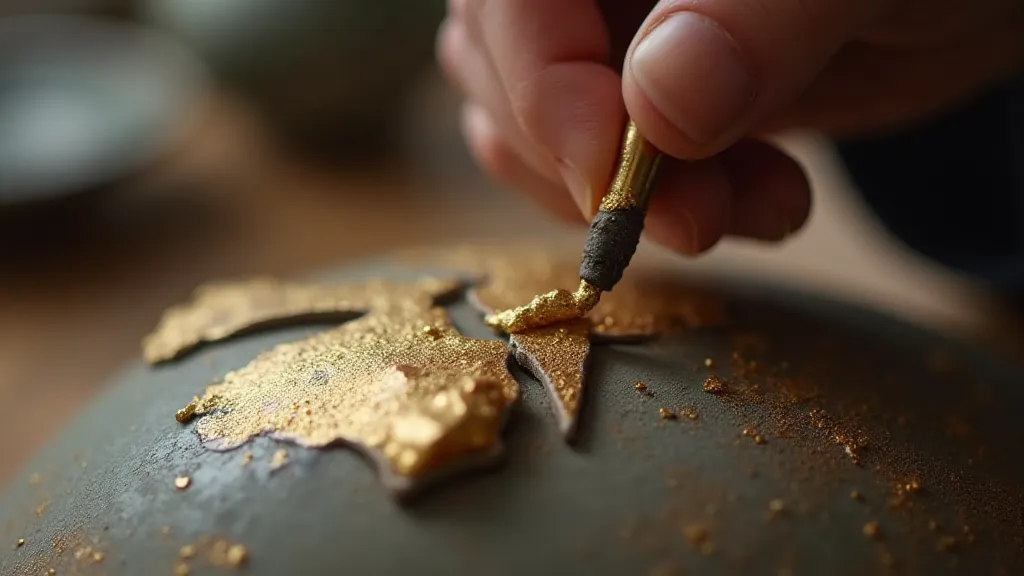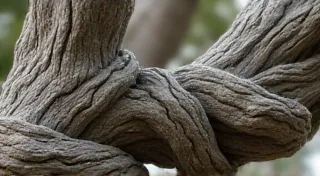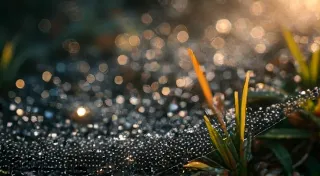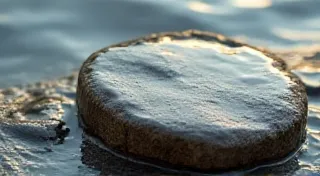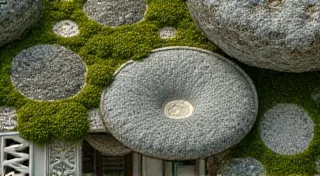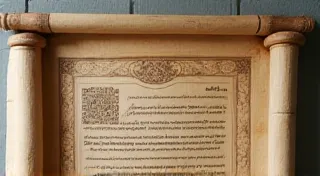The Resonance of Absence: Crafting Narrative Gaps Through Kintsugi
There’s a peculiar beauty in things broken, especially when they’re painstakingly, deliberately mended. This isn’t about erasing the fracture, the evidence of damage. It’s about celebrating it. It’s about transforming flaw into feature, sorrow into strength. This is the philosophy at the heart of Kintsugi, the Japanese art of repairing broken pottery with gold, a practice that has resonated with me profoundly, both as a lover of antique accordions and as someone who appreciates the power of carefully considered absence in storytelling.
My grandfather, a melancholic but deeply kind man, played the accordion. Not professionally, mind you, but with the heartfelt sincerity of someone pouring their soul into the bellows and keys. The instrument itself was a marvel: a Hohner Monarch, its wood darkened with age, its keys chipped and worn. It sat in a corner of his study, a silent testament to a life filled with quiet moments of personal expression. One day, while helping him move it, the accordion suffered a catastrophic break – the frame split, revealing the intricate workings beneath. It was a sound I still remember, a sharp crack that seemed to echo with all the unspoken emotions contained within the instrument's history.
My grandfather, defeated, placed it in a box. “It’s ruined,” he’s said, his voice heavy with resignation. But I saw potential, a chance to learn something profound. It was then I discovered Kintsugi. I was captivated by the idea of not just fixing the break, but highlighting it, transforming the vulnerability into something precious, something uniquely beautiful.
The origins of Kintsugi lie in 15th-century Japan, evolving from a practice sparked by the shogun Ashikaga Yoshimasa’s lament over a broken tea bowl. He sent it back to China for repair, but found the glued seams unsightly. Japanese artisans, valuing the inherent beauty and history of the object, sought a more elegant solution. Instead of disguising the damage, they embraced it, using lacquer mixed with gold, silver, or platinum to fuse the broken pieces back together. It wasn't merely repair; it was a celebration of imperfection, a recognition of the object’s journey and resilience.
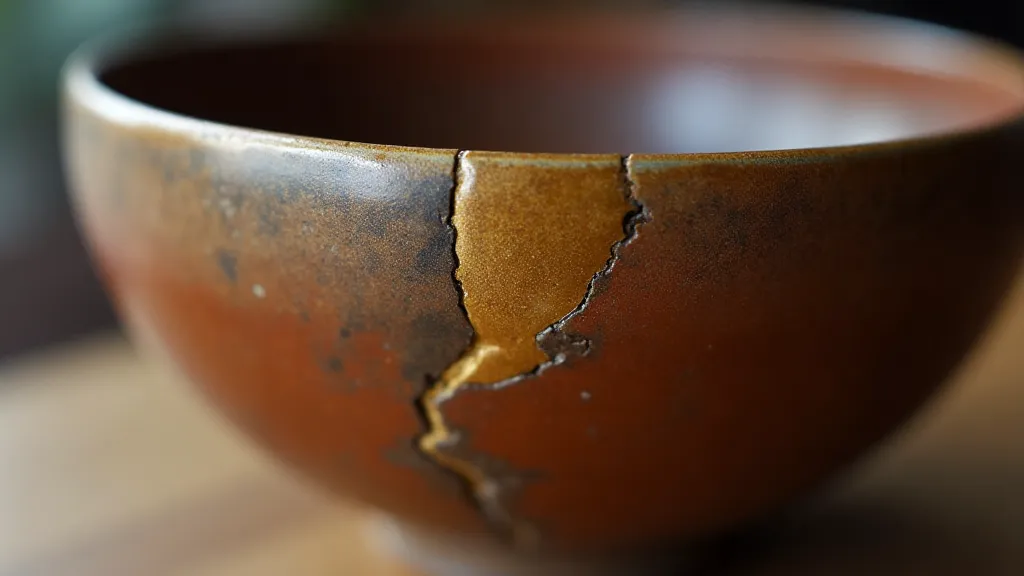
The process itself is painstaking. It requires not only technical skill but also patience, a deep respect for the material, and an understanding that true beauty often arises from embracing imperfections. The lacquer used is traditionally urushi, a natural resin harvested from the urushiwu tree. It takes years of drying and curing, and the entire process, from cleaning the fragments to the final polishing, can take weeks or even months. Each golden seam becomes a map of the object’s history, a testament to its endurance.
Thinking about Kintsugi in relation to storytelling felt incredibly revealing. Often, we’re encouraged to fill every moment, to explain every motivation. We feel compelled to tie up loose ends, to provide neat and tidy resolutions. But what if, instead, we left some spaces unfilled? What if we allowed the reader to fill in the gaps, to draw their own conclusions, to project their own experiences onto the narrative?
This is where the “resonance of absence” comes into play. It's the power of what *isn’t* said, the weight of the unrevealed. It’s the implication rather than the explicit explanation. Think of a character's past trauma, hinted at through subtle actions and unspoken anxieties. Think of a relationship fractured by a single, unresolved argument. The absence of detail can be far more evocative than a detailed exposition, allowing the reader to actively participate in the creation of meaning. It echoes the philosophy of 'Ma' in Japanese aesthetics – the importance of empty space to appreciate the objects within.
Consider the broken accordion. It could have been simply glued back together, the cracks hidden beneath a layer of varnish. But that would have erased its story, diminished its character. Instead, I envisioned highlighting the break, using a golden resin to trace the lines of fracture. It wouldn't be a perfect restoration; it would be a celebration of its history, a visible reminder of its resilience. It would be a piece imbued with a unique and poignant beauty. It wasn’t about erasing the damage; it was about acknowledging it, embracing it, and transforming it into a source of strength.
Applying this to writing, it means being willing to trust your readers, to believe in their ability to understand even when you don't provide all the answers. It means resisting the urge to over-explain, to spoon-feed them the narrative. It means allowing for ambiguity, for uncertainty, for the possibility of multiple interpretations.
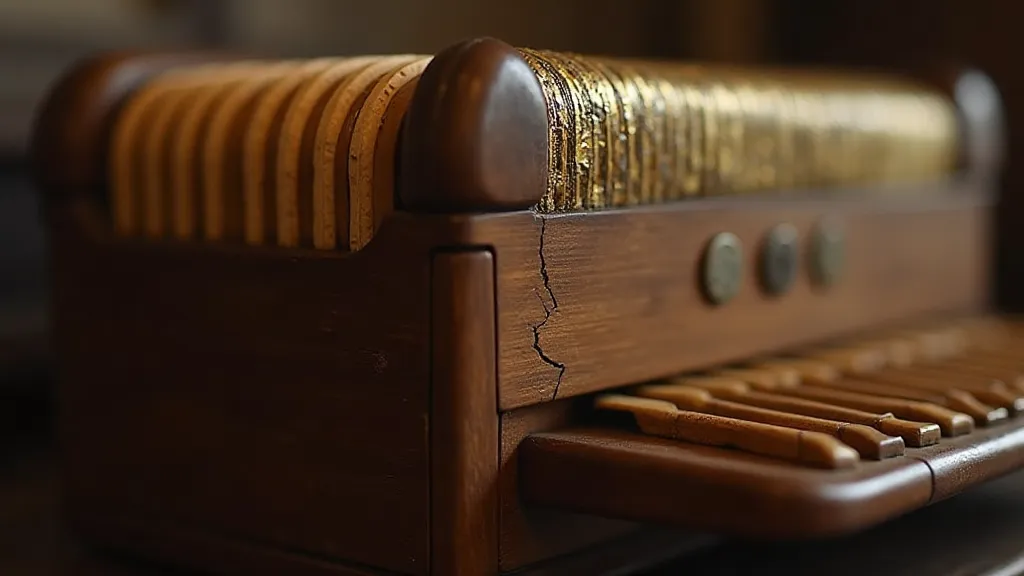
This approach isn't always easy. It requires a willingness to let go of control, to risk alienating readers who prefer a more straightforward narrative. But the rewards can be profound. A story that embraces absence, that allows for ambiguity, can resonate with readers on a much deeper level, leaving a lasting impression long after the final page has been turned.
The beauty of Kintsugi isn't just in the repaired object itself, but in the process – the slow, deliberate, and deeply respectful act of piecing something broken back together. It’s a lesson in embracing imperfection, in finding beauty in vulnerability, and in understanding that true strength often arises from acknowledging and celebrating our scars. And that lesson, I believe, applies equally to the art of storytelling, reminding us that sometimes, the most powerful narratives are the ones that leave room for silence, for omission, and for the evocative resonance of absence.
My grandfather never played the accordion again after it broke. He kept it in storage, a silent reminder of a loss. I’m working on the Kintsugi repair now. It will take time, patience, and a deep reverence for the instrument’s history. When it’s finished, it won’t be perfect. It won't be pristine. But it will be beautiful – a testament to resilience, a celebration of imperfection, and a powerful reminder of the stories that remain untold.
